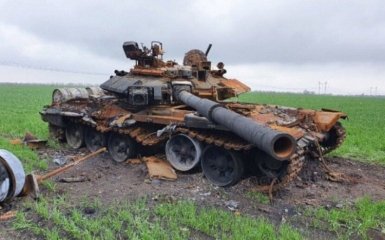Russian troops lose almost 100 tanks in Ukraine every month. At the same time, the industry builds no more than 50 within 30 days.
Points of attention
- Russian troops will suffer heavy losses of tanks in the war against Ukraine, but will remain with a reserve of T-72s in warehouses.
- In an effort to compensate for the losses, the Russians are refurbishing and modernizing old tanks and sending them to the front with new ones.
- T-72s have automatic loading, which makes them more difficult to maintain and repair compared to other outdated models.
- The Russian recovery rate of old tanks is rapidly decreasing, which may affect their offensive capabilities.
- By 2024, it is planned to introduce approximately 1,500 tanks and 3,000 samples of other armored vehicles into the Russian army.
Russia lacks tanks, but over 1000 T-72 MBTs remain in storage
As Forbes writes, the Russians are pulling out old Cold War tanks from long-term storage to compensate for the losses, restoring them, modernising them, and sending them to the front with new ones. Despite these problems, the Russians mostly do not use the oldest T-72s, which have thinner armour and worse fire control.
During the twenty-eight months of Russia's full-scale war against Ukraine, the stockpile of Russian tanks has decreased:
T-55 - by 31%;
T-62 — by 37%,
T-80B — by 79%.
T-72 - by 9%.
It is noted that almost any outdated tank can be restored. Even a completely rusted tank can be cleaned and polished, and other components can be replaced.
However, such deep restoration is highly time-consuming and expensive. Probably, because of this, the Russian Federation does not restore the T-72, directing money to new equipment.
Why would the Kremlin spend money on restoring 70-year-old T-55s and 60-year-old T-62s instead of 50-year-old T-72s? The answer, most likely, is that the T-55 and T-62 have human loaders in four-person crews, while the T-72 has automatic loaders that replace the fourth crew member, the publication explains.
The latter is difficult to maintain, so the US Army and many NATO countries never use this technology in their tanks. In a 1982 assessment, the US Central Intelligence Agency praised the T-72's autoloader for its speed but noted its complexity. This makes the older T-55 easier to restore than the younger T-72.
In this way, the Russians restore the new complex and old and straightforward tanks. They bypass old and complex machines because they require much time and money to return to working conditions.
According to analyst Richard Vereker, the oldest T-72s account for 10% of Russian T-72 losses.
I don't think there will ever be a point when Russia will run out of tanks, but their tank fleet will likely slowly but steadily shrink over time, affecting their offensive capabilities, OSINT analyst Highmarsed said in a statement on the network X.
Russian tanks in the war against Ukraine
Earlier, Highmarsed noted that the restoration rate of old tanks in Russia has sharply decreased. Russia removed about 2,500 tanks from storage, while over the past year, the pace of work has halved - from 115 to about 60 tanks per month.
As the analyst explains, initially, Russia had many reserve tanks in good condition that could be brought out of storage quickly, and the rate was probably even higher than 115 per month, which made it possible to compensate for high initial losses.
The Russian Federation's military-industrial complex plans to supply the army with approximately 1,500 tanks and 3,000 samples of other armoured vehicles in 2024, and the same amount is planned for next year.




